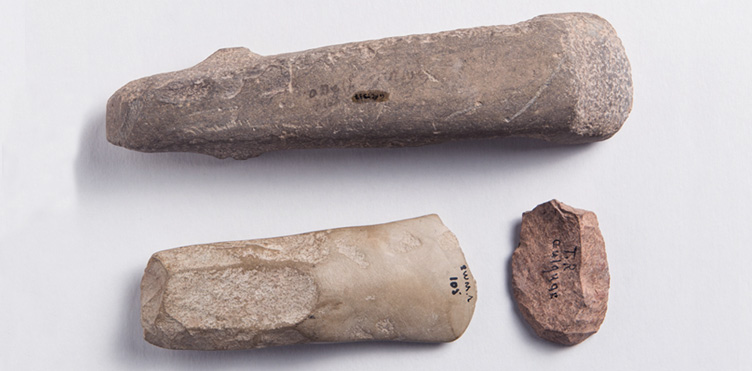
The field of archaeology often brings to mind images of monumental structures like the pyramids and the Acropolis, but that’s only one component. Archaeology is truly a global study of the entire human past – and in Atlantic Canada, UNB is leading the discovery.
Susan Blair, associate professor and chair of the department of anthropology, is heading a team of researchers from social and natural sciences who are working together to gain a greater understanding of the past from archaeological sites that are being lost to coastal erosion.
Coastal erosion, while a worry for centuries, is becoming increasingly severe due to more intense storm surges and the rising unpredictability of weather, says Dr. Blair.
Having worked in Atlantic Canada since the late 1980s and having seen the effects of erosion firsthand, she understands the importance of making every effort to salvage this history before it disappears.
With more than 250 registered sites just on the Canadian side of the Passamaquoddy region, this is an ambitious but vital undertaking.
“An archaeological perspective on past Indigenous ways of life is something that isn’t going to be available to people 50 years from now because those sites will have disappeared,” Dr. Blair says.
Dr. Blair and her team, which includes archaeologists, graduate students, and First Nations community members, are working together to discover and preserve this archaeological heritage as quickly as possible.
The archaeological record of the region is poorly explored, she says, so there’s a great deal that remains to be learned. The team has been studying sites in New Brunswick, Nova Scotia and Maine for traces of architecture, evidence of spiritual and social lives and everyday items that have been left behind. Each of these little pieces, when studied together, tell the story of the past, says Dr. Blair.
“For us, I think the patterning is what makes it very interesting,” she says, “because that’s where you’re able to make the association and date things and understand what the pattern that we’re seeing in the archaeological record is telling us about past ways of life and practices.”
Dr. Blair has experienced a shift in focus over her career from exploratory work to community-based collaboration. Working together with First Nations community members has changed the way both archaeologists and community members see the past, and in turn is transforming archaeological methods and understandings.